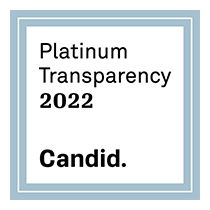
Having a proper and safe home where you can grow, develop, and take care of your family’s needs, is one of the most important things in life. Some people take having a sheltered home for granted. However, this is what provides you with security and stability. This way you can move forward and turn your attention to other great challenges that life has to offer. Things such as finding a suitable job, offering your children a good example together with your help whenever they need it. You can’t really focus on your life when affordable housing is a problem. If this is the case, i.e. if you have been struggling with your finances and paying the rent, you might consider affordable housing. If you are not sure what affordable housing is and if you are eligible for it, we will try to provide some explanations here.
What Is Considered Affordable Housing?
Affordable housing is a dwelling that a family or an individual can afford for 30 percent or less of their income. One of the biggest priorities of local governments is to make sure everyone has a decent home to live in. Therefore, housing policy is what these governments have to deal with. This is the reason why apartment owners and developers who agree to offer reduced rental rates to low-income tenants get tax credits. As long as these developers keep the rents for these low-income families affordable, they continue getting the tax credits.
Who Is Eligible for Affordable Housing?
Individuals and families spending more than 30 percent of their income on housing might need affordable housing. Paying high rent it might be difficult for them to afford necessities such as food, clothing, medical care or transport. According to The Department of Housing and Urban Development (HUD), it is estimated that there are 12 million households (both renters and homeowners) paying more than 50 percent of their annual income on housing. Thus, a person earning the minimum wage in his/her full-time job cannot afford a two-bedroom apartment. However, this differs from city to city and depends on the Area Median Income (AMI). The AMI is what determines who can afford to rent an apartment based on where they live and on their income. HUD determines the AMI for every region in the country and, for example, a household is considered low-income in case it earns less than 80 percent of the median income of the local area. Nevertheless, even if you or your family spend more than 30 percent of your income on housing, that does not mean you will be able to qualify for affordable housing. In fact, it is considered that if your income is too low, you will not be able to afford the part of the rent cost even when subsidized. This means that if you earn 50 percent or slightly more of the AMI, you might not be able to qualify.
What Is Affordable Housing Program?
Although the demand for affordable housing is high and some low-income families have been waiting for this type of housing for years, it is more expensive to construct an affordable building than renters can pay. Therefore, it is not that easy to motivate developers to build more affordable units, especially if they can build more luxurious buildings and set high rent rates for these apartments. Thus, the demand for affordable housing exceeds supply not only in urban areas but also in the suburbs. Fortunately, there are programs, such as the affordable housing one, that is trying to deal with this issue using various methods – How does affordable housing work?
- Rent control limits the frequency and amount the rent raises in order to protect the vulnerable populations from eviction. This is especially important in areas where rents are increasing fast which is very often the case in cities with lots of renters, like New York, Washington, D.C. and San Francisco. States decide how rent control is implemented.
- Mixed-income buildings offer some units for people making between 30 and 60 percent of the AMI and, thus, are charged less than market rent. In returns for these units, developers are recouped in tax credits, grants, vouchers, etc.
- Housing vouchers are one of the main methods for housing subsidizing in the United States. Families who get these vouchers can choose the location and type of the apartment they would like to rent and, what is more, will only pay 30 percent of their household income for rent as the voucher covers the rest. However, you should bear in mind that vouchers are limited and some families could be on the waiting list for years before they qualify.
What Are Public Housing and Section 8?
Public housing is government-owned housing providing affordable and adequate housing to people in need, i.e. low-income families, the elderly, and persons with disabilities. It is also considered affordable housing as the government sets the rates of the rental. The rent is based on the family’s annual income. There might be some deductions from the annual income such as certain allowances for all dependents, a person with a disability, an elderly family, and in some cases, medical deductions, as well.
On the other hand, the Housing Choice Voucher Program or Section 8 helps families afford their rents by using the voucher to pay for all or a part of the rent rates. There are two types of Section 8:
- the tenant-based one where the renters get the voucher directly and, thus, can choose the apartment community and
- the project-based one where landlords get the subsidy and they agree to offer some units for the families who qualify for affordable housing.
How to Apply for Affordable Housing?
This depends on the type of affordable housing you would like to get. If you are interested in public housing or Section 8, contact the public housing agency in your state. When it comes to affordable housing, you can look for an apartment complex or developers who offer this. Check the eligibility criteria and contact them directly.
A lot of people are struggling to pay for a decent home. Some households spend larger parts of their budgets on housing than on anything else. Housing prices are rising faster than wages in many US states, thus making it almost impossible for low-income families, the elderly, youth, and families with children to find good quality and, at the same time, affordable and appropriate housing. However, we should be aware of the fact that those households that are struggling to pay their housing expenses are faced with various other challenges. These usually include not having enough money for health care, education, and healthy meals. In turn, these issues may introduce further problems such as diseases, lower school attendance, and employment opportunities, unmanageable debts, homelessness, and poverty. This is no longer a problem for these families only, it very quickly becomes the problem of the whole community and society.
Home is so much more than just a roof and walls, it provides safety, comfort, hope, and opportunities for growth and development of not only the family members living behind that door but also their neighbors and the whole community. All people deserve equal opportunities and should be able to afford a stable and safe home. Let’s together help the families in need by providing them with a chance to lead stable and safe lives.







